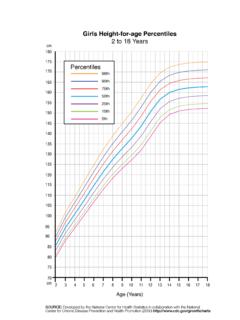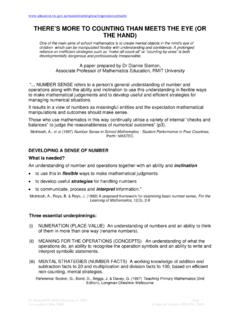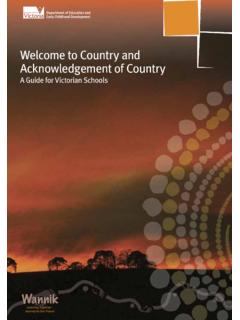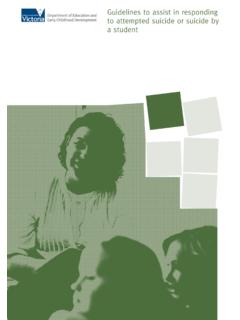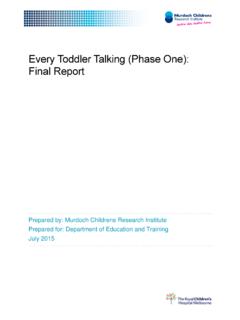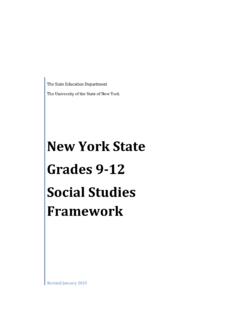Transcription of Guidelines issued by the Department of Education and ...
1 Guidelines issued by the Department of Education and Training Victoria for Registered Training Organisations and Employers in relation to Post- secondary Students undertaking Practical Placements (Updated Practical Placement Guidelines ). as at 10 April 2017. These Guidelines are to be read in conjunction with the relevant provisions of the Education and Training Reform Act 2006 and replace the Amended Guidelines for Registered Training Organisations (2011) and Employers in relation to students of technical and further Education undertaking practical placements. These Guidelines do not apply to the work experience or training placement of: international students undertaking a post- secondary Education course post- secondary students of training organisations regulated by the Australian Skills and Qualifications Authority (ASQA).
2 However, they provide information to ASQA regulated training organisations on insurance coverage for their post- secondary students undertaking practical placements in Victoria. 1. Definitions The following definitions apply for the purposes of these Guidelines : ASQA' means the Australian Skills and Qualifications Authority. Department ' means the Department of Education and Training Victoria. Employer' means a person or organisation hosting a post- secondary student on a practical placement. Employ' and Employment' refer to the engagement of a post- secondary student to undertake a Practical Placement. There is no requirement that a contract of employment be in place with the post- secondary student for the purposes of employment laws at common law or under statute.
3 ETRA' means the Education and Training Reform Act 2006 (Vic). Practical placement' refers to the placement of a student of an RTO with an employer pursuant to a practical placement agreement under section of ETRA. Practical placement payment order' refers to an order of the Secretary of the Department that post- secondary students undertaking a practical placement are not required to be paid for their work on that placement. A. copy of the practical placement order is at Attachment A. -1- Post- secondary student' means a student enrolled in a post- secondary Education course of an RTO including a person who is not beyond the age of compulsory school attendance. RTO' means a vocational Education and training organisation or further Education organisation registered by the VRQA as a training organisation under section of ETRA or a training organisation treated as being registered on the National Register under section of VRQA' means the Victorian Registration and Qualifications Authority.
4 2. Application These Guidelines apply to RTOs registered with the VRQA and employers in relation to their obligations in arranging practical placements. 3. Purpose The purpose of these Guidelines includes: to assist RTOs and Employers to meet their obligations with respect to arranging practical placements, including clarifying their responsibilities. to clarify the insurance coverage for post- secondary students of ASQA. registered training organisations undertaking practical placements in Victoria. 4. Practical placement agreements In order for a post- secondary student's work experience or training with an employer to be considered a Practical Placement for the purposes of ETRA, there must be an agreement in writing between the RTO and the employer about the placement of the post- secondary student.
5 If a post- secondary student is placed for work experience or training with a written practical placement agreement between a VRQA regulated RTO. and the Employer, that arrangement will be considered a practical placement for the purposes of ETRA and the post- secondary student will be eligible to make a claim under the Department 's workers' compensation insurance policy if they are injured in the course of the work experience or training. Post- secondary students of an ASQA regulated RTO will not be eligible to make a claim under the Department 's workers' compensation insurance policy if they are injured in the course of the work experience or training. These students may, however, be covered by the Department 's other insurance arrangements.
6 In addition to the relevant details of the RTO, employer and post- secondary student, a written practical placement agreement should also include: 1 Section is relevant in respect of training organisations registered with the Training Accreditation Council of Western Australia with a post- secondary student undertaking a Practical Placement in Victoria. -2- the course of study with the RTO and the relevant skills required as part of that course to be developed, reinforced and/or assessed during the practical placement the start and finish dates and the total length of the practical placement expressed as hours, and the maximum hours per week clarification that the post- secondary student is not required to be paid for the practical placement (see practical placement payment order), the signatures of the employer and the RTO as parties to the practical placement agreement the signature of the post- secondary student as acknowledgement of their agreement to participate in the practical placement.
7 A voluntary best practice model practical placement agreement is at (Attachment B). All RTOs and employers are encouraged to use this model agreement as a starting point for their practical placement agreements. The original signed agreement should be securely filed by the RTO and a copy given to both the employer and the post- secondary student. The VRQA or the Department may request a copy of the agreement. 5. Responsibilities of RTOs The RTO is responsible for ensuring that the Practical Placement is a meaningful experience for the post- secondary student undertaking it. The RTO is responsible for ensuring that the work experience undertaken by its post- secondary student on Practical Placement is: directly related to, and is at the appropriate skill level, for the training outcomes of the unit of competency or course it is providing useful for the vocational and employment outcomes of the course in which the student is enrolled.
8 It is recommended that the RTO ensures that the practical placement agreement with the employer reflects these requirements. 6. Duration of Practical Placement The recommended maximum duration for a practical placement is 240 hours in total, with a maximum of 38 hours to be worked in any one week. If, consistent with the relevant nationally accredited training package requirements, more than a total of 240 hours or 38 hours per week are required for any reason ( by professional bodies or regulators), it is the responsibility of the RTO to justify that additional hours are required to meet the course outcomes for the post- secondary students(s). The RTO should have regard to the welfare of the post- secondary student.
9 RTOs should keep records detailing the reason for any decision to require the post- secondary student to undertake more than a total of 240 hours, or more than 38 hours per week, for the practical placement component of the course or unit of competency. -3- 7. Rate of pay By Order of the Secretary of the Department (practical placement payment order), post- secondary students undertaking a practical placement are not required to be paid for the work on that placement. This practical placement payment order came into effect on 1 January 2011. While post- secondary students are not required to be paid for a practical placement, there is no prohibition on payment being made. However, before offering to make any payments, the relevant RTO and employer should seek professional advice on any implications that doing so might have under employment or industrial laws.
10 8. Insurance cover The Workplace Injury Rehabilitation and Compensation Act 2013 deems a post- secondary student undertaking a practical placement to be a worker' for workers' compensation purposes, and deems the Department to be the employer of that post- secondary student (of VRQA registered RTOs only) in respect of the Employment under the Practical Placement agreement. Accordingly, post- secondary students of VRQA-regulated RTOs who are injured while undertaking a practical placement may be eligible to make a claim under the workers' compensation insurance policy held by the Department . Post- secondary students of ASQA-regulated training organisations who are injured while undertaking a Practical Placement are not eligible to make a claim under the Department 's workers' compensation insurance policy.
